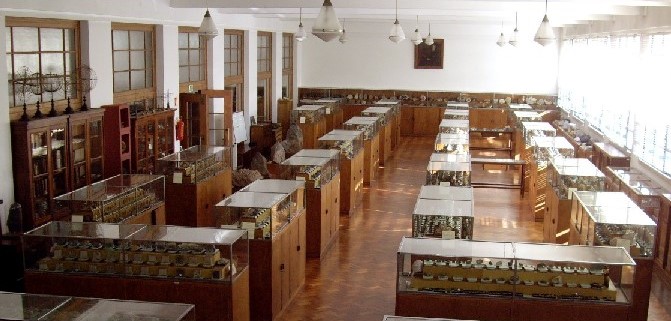The Alfredo Bensaúde museum is located on the 3rd floor of the mines pavilion. It is a university museum primarily dedicated to Portuguese mineralogy, crystallography and petrology. Its collections comprise also relevant geologic materials ...
Site - IST Geosciences Museum, Lisboa
The two geosciences museums of the Instituto Superior Técnico (IST) are located on the Minas pavilion (Alameda campus). The collections of these museums include, in addition to various kinds of geological materials, scientific instruments and educational materials (books, maps and historical photos), personal scientific items that belonged to various teachers of the mines department. The major part of the collection comprises geological materials from Portugal and from its former colonies. Many of these materials came from historical mining occurrences, no longer accessible. There are, associated with the museums, libraries specialized in geosciences, as well as a mineralogy and petrology laboratory. The roots of the IST geosciences museums stem back to the Lisbon Industrial Institute (IIL), who was renamed in 1869 as Lisbon Institute of Industry and Commerce (IICL). Both these institutes operated from 1859 to 1911 in the Madeira Palace building, located at Rua da Boavista, and no longer existent. This same building housed the IST from 1911 to 1936, when the Alameda campus was inaugurated. The present day museum facilities were designed by Pardal Monteiro, a celebrated architect from the first half of the 20th century, and were inaugurated in 1936. The space and equipments of exhibition preserve their original design and, as such, they constitute a relevant architectural reference.
REPRESENTATIVE
Points of Interest to visit at this Location
The Décio Thadeu museum is located on the 2nd floor of the mines pavilion. It is a university museum primarily dedicated to geology and mineral deposits. The collections contain an important assemblage of stratigraphy and paleontology sampl ...



